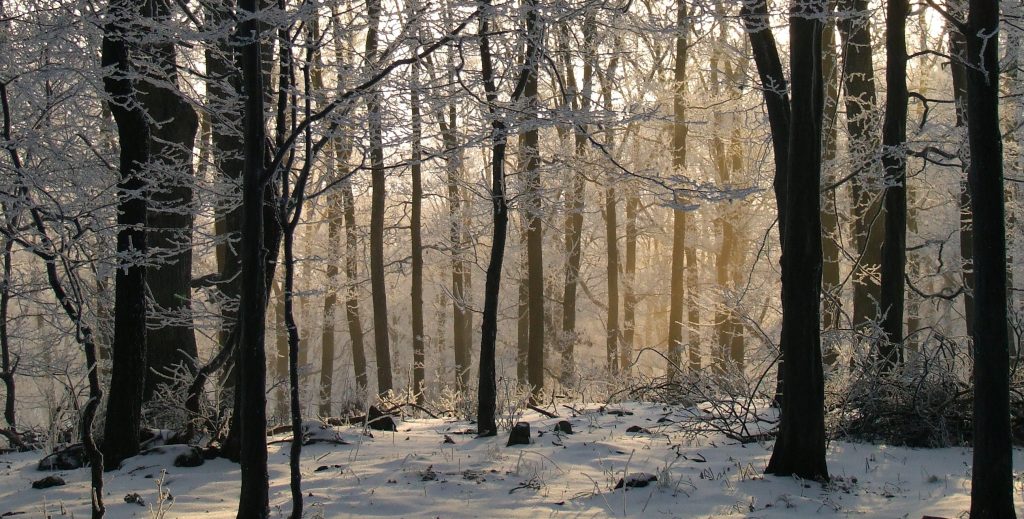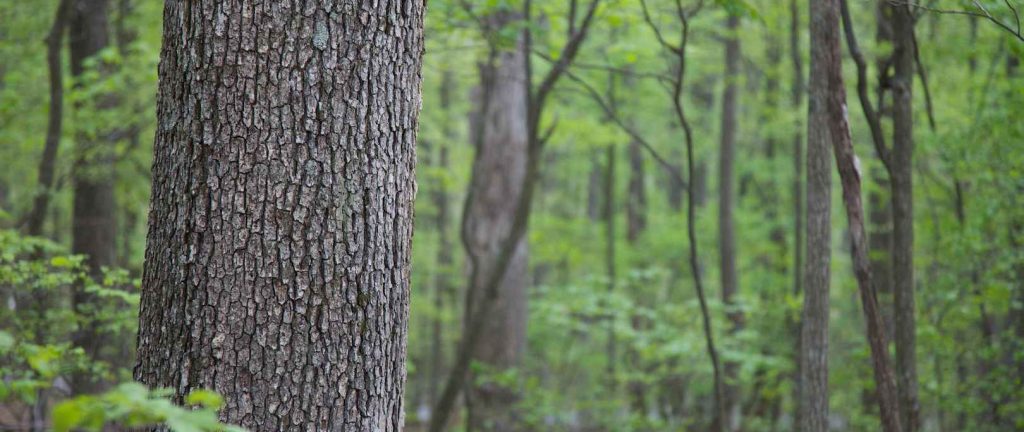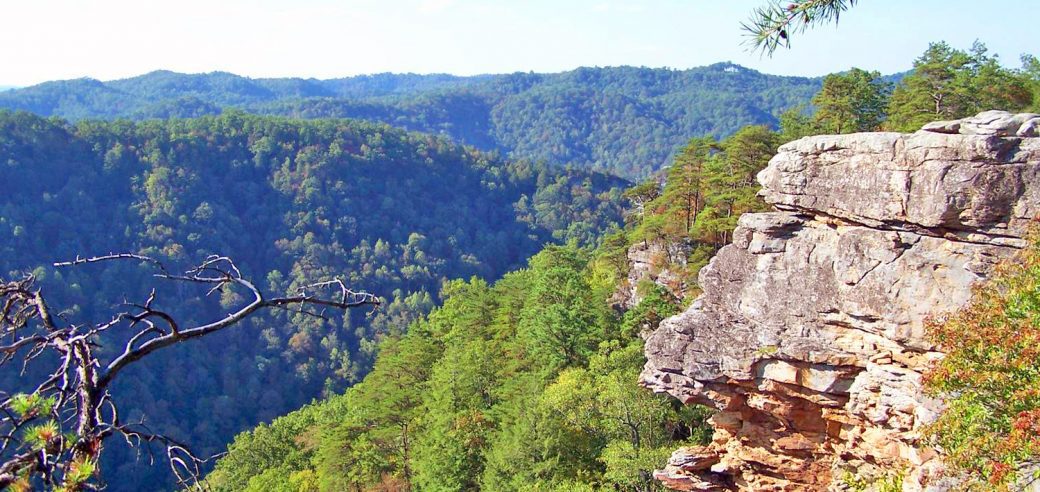The easiest step in this process—and one of the most important factors when assessing the value of a stand of timber—is estimating the volume of individual trees.
Estimating Standing Timber Value 1,2,3…
Follow our part guide to estimate the value of your standing timber. Whether you want to calculate the value of each and every tree, or just familiarize yourself with the process, these articles will give you all the tools you need to identify, estimate volume and value of your timber.
One of the most approachable ways to begin assessing timber value is to estimate the volume of individual trees. While exact valuations require more detail, volume provides the foundation for an informed estimate.

What Kind of Tree is it?
Head on over to our Industry Fact Sheet for the scoop on tree identification.Ohio Timber Works is dedicated to helping landowners understand what their standing timber might be worth. This comprehensive guide walks you through estimating volume, assessing quality, and calculating a ballpark value, so you can feel confident before contacting our experts.
Even within valuable species, individual tree quality matters. Logs with straight trunks and minimal branching fetch higher prices. Crooked trees or those with low limbs, rot, or scarring often receive lower grades, reducing overall stumpage value.
Common defects include rot, knots, sweep, excessive branching, or embedded metal (like fencing or nails). These lower a log’s grade and therefore its market value, even if the species and volume are desirable.
Why This Matters
Standing timber can represent a significant asset—often thousands of dollars per acre depending on species, size, and quality. A thoughtful estimate helps landowners make informed decisions about whether and when to harvest. Ohio Timber Works is here to guide you every step of the way.
To learn how to estimate board feet from trees on your land, see our detailed guide: Estimating Standing Timber Volume.
As a rough benchmark, mature trees with a DBH of 20 inches often yield 250–500 board feet—but actual volumes may vary significantly.
Step 1: Estimating Your Timber’s Volume
Volume—measured in board feet—is the single most critical factor when estimating timber value. One board foot equals a 1‑inch thick board that’s 12 inches wide by 12 inches long (144 cubic inches).
Use industry-standard tables like the Doyle or International ¼” scale, which estimate board-foot content from measurements such as Diameter at Breast Height (DBH) and merchantable height. These tables may be adjusted using form classes like the Mesavage–Girard system for better accuracy.

Step 2: Understanding Species Value
Among the most valuable species in the region are:
- Black Walnut – prized for its dark heartwood and fine grain, widely used in high-end furniture and gunstock production.
- White Oak – durable, rot-resistant, and in demand for flooring, barrels, and exterior applications.
- Sugar Maple (Hard Maple) – known for its hardness and fine finish, commonly used in cabinets and flooring.
Other species such as Hickory, Red Oak, Soft Maple, Beech, and Cherry also have market value, but typically command lower stumpage rates unless they are exceptionally straight and free of defects. Ash, once widely harvested, has seen a major decline in demand due to emerald ash borer damage throughout the Midwest.
Timber buyers also evaluate tree quality within species. Logs with straight trunks, minimal taper, and few lower limbs are far more valuable than trees with sweep, rot, or scarring. The presence of embedded metal (such as old fencing or nails) can also disqualify logs from high-grade markets.
Foresters must look at both visible and invisible defects. Some trees appear beautiful while standing but are hollow inside. Others have mineral stains caused by soil composition or past livestock grazing. These issues are hard to detect while the tree stands. However, they will negatively impact timber value.
To see a species-by-species breakdown of typical value categories and end uses, check out the Purdue Extension guide to hardwood timber markets. It’s a trusted reference for landowners across the Midwest and aligns closely with conditions in Ohio.
Step 3: Using Up-to-Date Timber Price Reports
Accurate, current pricing is essential for realistic timber valuations. That’s why you should refer to the latest Ohio Timber Price Report, published twice annually by Ohio State University Extension in partnership with the Ohio Division of Forestry. This report aggregates stumpage and delivered sawlog price data from mills, timber buyers, loggers, and wood dealers across the state.
When you look at this sheet, you’ll notice grades along the left column. For each species, prices are listed for prime logs, number 1 common, number 2 common, and blocking. An average for all grades combined appears at the bottom of each section. These grades correlate with the quality of lumber that can be cut from a tree. They also determine the value of that lumber.
Using the most recent data ensures your estimates reflect real-world market conditions. Price data can vary significantly between seasons and regions. For example, prices in southeastern Ohio may be lower or higher than in other parts of the state depending on local demand, forest quality, and accessibility.
Long-term data trends are equally valuable. Analysis of the Ohio Timber Price Report from 1960 to 2011 shows that, while nominal log prices have steadily increased, real (inflation-adjusted) prices have been relatively flat for most species—except for white oak, which has seen gains in prime and #1 common grades.
Keeping up with these reports also allows for strategic timing. Market demand ebbs and flows—when lumber prices rise, sawmills often increase purchases of sawtimber, which in turn pushes up stumpage rates. Landowners who monitor these trends can often achieve better harvest returns.
By using the bidirectional market intelligence in the Ohio Timber Price Report—and staying alert to broader lumber market trends—you, with the support of Ohio Timber Works experts, can plan and harvest with confidence.
Step 4: Putting It All Together—A Sample Calculation
Let’s say your stand includes 12,000 board feet of mature Black Walnut. Using an average price of $3,800 per 1,000 board feet, your timber estimate would be:
(12,000 bd‑ft ÷ 1,000) × $3,800 = $45,600
Repeat this process for each species present to develop a total estimate for your stand.

Accessibility & Harvest Logistics Impact
Harvest logistics—like the distance to roads, slope, and soil conditions—can affect what buyers are willing to pay. Higher mobilization costs may reduce stumpage rates.
Similarly, the scale of your harvest matters: large, consolidated timber sales often yield better per-unit prices than piecemeal removals.
What You Can Do Next
- Measure several trees for DBH and estimate merchantable height.
- Use volume tables (or our volume guide) to estimate board feet by species.
- Multiply by current Ohio stumpage rates from OSU’s report.
- Adjust for site conditions and harvesting logistics.
- Contact the experts at Ohio Timber Works for a free standing-timber assessment and professional quote.
Now that you’ve compiled a list of trees ready to harvest and estimated board footage for each species, it’s time to get out the calculator. This is where the process gets a bit complicated. Trees of different grades command widely varying prices.
Estimating standing timber value is a smart first step—and Ohio Timber Works stands ready to bring clarity and confidence to your harvest decisions.
Timber Works explains every step of both the assessment and the logging processes along the way. We make timber harvesting recommendations that consider the unique characteristics of your woods, and address the input and concerns from you, the land owner, above all others.
On the other hand we never pressure customers to sign contracts prematurely, nor do we include ambiguous language about the scope and details of a harvest in the agreements we make. Instead, Timber Works works diligently to ensure your questions and concerns are addressed fully and honestly. Consequently , you can trust that transparency and integrity are at the core of our business practices.
Additional Resources
- Estimate the volume and individual species’ footage in your timber stand.
- If you can wrap your arms around a particular tree it might not be quite ready to harvest, though this depends in part on species and other conditions.
- The more mature trees you have, the more likely it is that your timber is ready for harvest.
- To estimate the value of your timber, take the volume, divided by 1,000, and multiply it by the price quoted in your states standing timber stumpage price report.




Comments 6
My wife’s parents own a farm in eastern NC that grows pine trees for lumber. I was wondering when the best time typically it is to harvest pine trees (either longleaf or loblolly) to make the most profit from them. They were recently harvested and the widest stump I could find was approximately 20″ with most stumps being 16″. There was approximately 150+ acres of pines. I feel like they may have been harvested too early since they were thinned less than 5 years ago. I think most of the harvest was sold as pulp wood. Is this pretty common?
I have a mature black walnut tree in my back yard. I live in Dayton Ohio and wonder if there is someone in my area I can contact who would be interested in checking it out for purchase.
Your response would be most appreciated.
I have a black walnut that is138 inches round and the first limb starts at about 5 feet it is over 40 feet tall. Can you give me a rough estimate of the value.
So if I am going by nwpa prices for hard maple now, a tree of 15′ diameter is worth 225?
helo i have a lots of standing timber different kind
I have hard time to find some one to sell to. Many
Lookers they don’t want to pay the price what is worth
Help i need please. My name is john thanks.
Phone
We typically don’t purchase individual walnut trees.